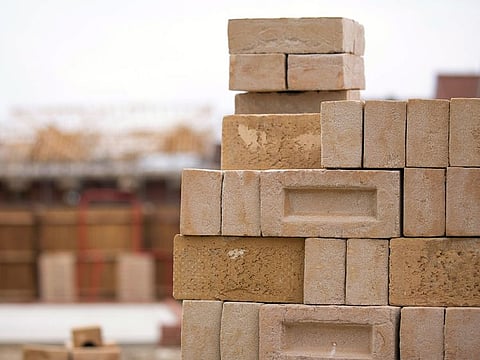Middle East’s cement production needs to raise its game on carbon emission
MENA’s cement manufacturers spew out more carbon than global average – it needs changing

The MENA region is the world’s largest cement-producing region after China and India, representing around 7 per cent of global production. Cement and concrete are essential materials supporting urbanisation and development. These days the cement industry is drawing more scrutiny because of its high, hard-to-abate CO2 emissions.
Cement production in the region is responsible for around 0.5 per cent of total global carbon emissions – more than 180 million tonnes every year. But unfortunately, there hasn’t been a lot of progress yet when it comes to efforts to reduce this, which is a pity as there are some solutions that could be implemented at low cost and would have a significant impact right away.
There is plenty of low-hanging fruit for cement companies in GCC to become more competitive while also reducing emissions, representing a significant commercial and environmental opportunity. But the time to act is now, as the window of opportunity is narrowing for the region to be proactive and shape the industry roadmap, rather than wait for government regulations to be imposed.
Cement production in the region emits on average 830 kilograms of CO2 per ton of cement, 35 per cent higher than the global average of 620 kilograms. With today’s technology this can be brought down significantly. The World Cement Association has developed, together with our partner A³&Co., a sectoral roadmap for cement producers in the MENA region, outlining key steps to halve emissions with low capital expenditure.
The roadmap was a major feature of the WCA’s annual conference ‘Navigating the Climate Challenge: Reducing Carbon and Reducing Costs’. Cement producers need to focus on four main areas: operational excellence, increasing the use of supplementary cementitious products, fuel switching to use more waste and biomass, and improving energy efficiency through a range of possible measures including waste heat recovery (WHR), cooler retrofits, process fan optimisation and so on.
Energy efficiency in particular is an area that is starting to gain more attention. Driven by higher energy prices, processes such as WHR can now have highly attractive returns. Using waste heat to generate electrical energy is a well-established technology and earns a return based on electrical power savings, which can be significant. Having said that, in countries such as Egypt, where electrical power is subsidised, there is little economic return at present, but from an environmental standpoint it is still of value. While the specific challenges for cement producers across the MENA region vary from country to country, one of the issues common to several countries is limestone quality, as well as the limited availability of supplementary cementitious material (SCM).
SCMs are important because they can be used to substitute clinker, a key ingredient in the manufacture of cement, but one that carries 80 per cent or more of the carbon footprint. So, one of the most important ways to reduce cement emissions is to increase the use of SCMs, the most commonly used of which are fly ash, produced from burning coal, and blast furnace slag.
While these materials are in short supply in the MENA region, alternatives such as calcined clay and natural pozzolans are more plentiful, while new technologies are making both of these materials more effective than before.
Finally, substituting coal with other fuels can also substantially reduce emissions. Many alternative fuels such as municipal and agricultural waste can be burned in cement kilns and emit far less fossil carbon. Within the MENA region, the Moroccan cement industry is leading the way in its use of renewable power.
When looking at the sector’s outlook through an environmental lens, we expect COP27 and COP28 to promote green construction and coordination along the supply chain to make the most of the available carbon savings. Net zero policies with 2050 or 2060 goals will be fleshed out with sectoral roadmaps that set out and incentivise targets for the short term, such as 2025 or 2030 targets.
We also expect mechanisms to be developed to put into practice the promised $100 billion per year funding by developed countries for decarbonisation in emerging economies. So, overall, the future is looking bright for those companies that recognise the decarbonisation opportunity, and are willing to take action today.
Sign up for the Daily Briefing
Get the latest news and updates straight to your inbox

